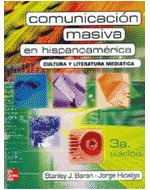The 2009 Horizon Report, a collaborative effort of the New Media Consortium and the EDUCAUSE Learning Initiative, identifies emerging technologies expected to have an impact on universities over the next five years. Each of the technologies affects different facets of creativity within education, and it ranges from those already appearing on campuses to others yet to be applied to the education environment.
According to Susan Metros, associate vice provost and deputy chief information officer at the University of Southern California and who chaired the 2009 Horizon Project Advisory Board, there are some striking themes among technological trends and how they will shape academia.
"It is going to be all about mobility," she said. "Teaching will no longer revolve around place, whether that be in a campus classroom or at a distance, but about the learner and how he or she transverses that space. With the advent of smart handheld devices, learning will be much more dynamic, two-way, customized and centered on the individual."
Immediately on the horizon -- and technically already here -- are mobiles and cloud computing, which already have been adopted on many campuses. The iPhone is an example of the mobile and its capacity to assume many tasks once exclusive to portable computers and new applications, such as GPS and WiFi connections, that blur the line between phone, GPS, and computer. Cloud computing is a unifying technology supports grassroots video, collaborative webs and social operating systems, and poised to drastically change the way we think about computing, according to the report. Leading institutions have begun applying technologies such as geo-based projects and the personal Web. Geo-coded data allows common devices to determine and record location, save data along with captured media and transit it to Web-based applications. The personal Web represents a collection of tools and widgets to configure and manage the ways in which a person uses the Internet.
In the more distant future for learning-focused organizations are semantic-aware applications and smart objects. Within four to five years, these technologies are expected to be increasingly incorporated into the college learning environment. Semantic-aware tools make connections between seemingly unrelated concepts, individuals, events or things, which would take most people many years to perceive, and smart objects are objects with unique identifiers that can track information about themselves.
The report also details trends and challenges educational institutions are likely to face in the future. However, the report indicated, there is still a growing need for instruction in new skills such as information literacy, visual literacy and technological literacy. In addition, educational material needs to change with the times and current systems are not up to par for managing real-time information flows, according to the report.














